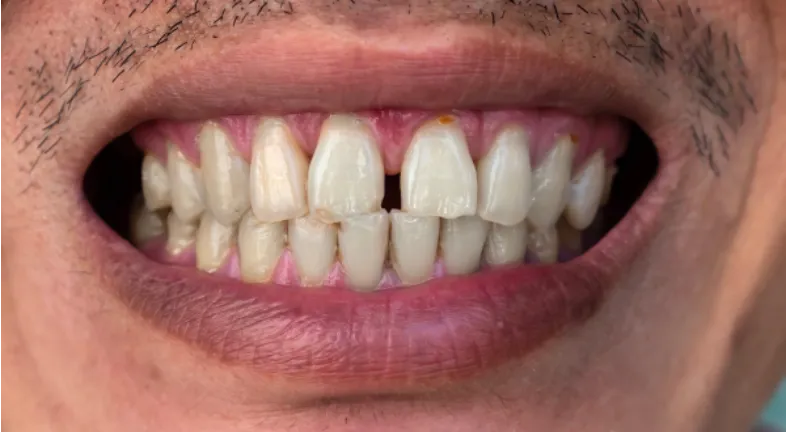
While clear aligners are considered to offer a more comfortable teeth straightening experience than traditional metal braces, it's not to say that they can’t cause any discomfort, especially in the early stages.
Those who have used clear aligners before will agree that clear aligners can be slightly discomforting in the initial phases of the teeth straightening treatment. Fortunately, there are some tips and natural remedies that can be used to relieve the discomfort and soreness and get the treatment back to normal. This guide will walk you through these easy and effective ways, so let’s dive in!

When an individual starts wearing clear aligners, the teeth might take some time to adjust to the new positions they are supposed to take. One of the things you should know before choosing clear aligners is that this movement can cause discomfort to the gum, teeth, and jaw when you shift to the next set of aligners. This feeling is very typical, but that does not mean that it is not annoying. The good news? There are so many natural remedies that may work wonders for you when going through the initial phase of discomfort and pain that comes along with clear aligners.
Let’s look into some easy ways to soothe your teeth and gums with natural remedies. These tips are simple, safe, and can be done right at home with readily available ingredients.
Using cold packs is a very simple method of relieving inflammation and pain in the mouth. In case of not having a cold pack, something similar, such as a bag with frozen peas, can be used.
It might be useful to rinse your mouth with salt water, which will help to reduce the discomfort that accompanies gum soreness and get rid of bacteria that lead to soreness.
Clove oil is also known to act as an analgesic and has been used as a natural remedy for pain since ancient times. It has a substance called eugenol in it and acts as an anesthetic to the teeth and gums.
While aloe vera is very useful for the skin, it can also be helpful for teeth and mouth pain.
Green tea is an amazing beverage, but did you know it can help relieve mouth pain? It has anti-inflammatory chemical compounds that reduce inflammation and act as antibacterial substances.

Peppermint and chamomile are some of the essential oils that can help alleviate discomfort related to clear aligners.

A simple gum massage can work wonders to relieve tension and soreness in your gums.
To soothe the painful teeth and gums, it is advisable to take soft foods that will not exert pressure on your teeth.
It is important to note that there are a lot of things that you can do with water for the betterment of your oral health when you are wearing aligners.
Feeling stressed by the discomfort? A break or even deep breathing for short as five minutes will assist in clearing your mind and relieving tension.
In addition to the following remedies, there are a few measures that one should take in order to avoid such discomfort in the future. Make sure that you brush your aligners daily, wear your aligner for the correct number of hours that your dentist instructed, and change to fresh aligners at night when you are likely to have the pain at night.
Clear aligners give you the opportunity to straighter teeth, and with these natural remedies, you have the best chance of not having major discomfort with teeth straightening. Of course, don’t forget to maintain good oral hygiene, and if the pain lasts, don't hesitate to visit your dentist.
Clear aligners are a fantastic method to achieve the smile you have always wished for without the hideous look of metal braces. There are also hiccups here and there; nevertheless, cold compresses, saltwater irrigation, and essential oils offer easy passage. Thus, proper oral hygiene and these natural home remedies will help you to be more comfortable wearing trays and avoid various problems with aligners. Just in case the pain persists, you should always consult with your dentist.




Curated the best for your knowledge
 Gaps after Aligners: Causes, Prevention & Fixes
Gaps after Aligners: Causes, Prevention & FixesA perfectly aligned, radiant smile is a dream for many. However, not everyone is born with it. Teeth straightening treatments have become pretty common to ensure a straighter smile that leaves a lasting impression. The procedures are effective and give you the smile you have always wanted.
Read More Aligners for Adults: The Modern Way to Straighten Your Smile
Aligners for Adults: The Modern Way to Straighten Your SmileIf you've ever concealed your smile in photos or refrained from laughing heartily due to misaligned teeth, you are not alone. Many individuals, including mature adults, share this sentiment. Fortunately, you no longer require a mouth full of metal to achieve the smile you have always desired. Today's aligners for adults are slimmer, subtler, and much more effective than ever before. Teeth straightening has become a discreet and adaptable option. These clear trays will slowly shift your teeth from behind the scenes while you continue to live your life as usual. Let's take a look at how teeth straightening for adults works, why it has become so trendy, and which brands, including Invisalign, Caspersmile, and Smile White, are worth considering if you are based in the UK.
Read More Mouth Guards: Types & How They Protect Your Teeth
Mouth Guards: Types & How They Protect Your TeethPeople don’t always think about how easy it is to damage a tooth. One wrong move in a football game, a trip on the pavement, or even just grinding in your sleep, and boom, chipped enamel or worse, a full-on dental emergency. Teeth look solid, but they’re actually pretty fragile when it comes down to it. That’s where a mouth guard comes in. It’s basically a cover for your teeth. Easiest way to picture it? Like a helmet, but for your mouth. It takes the hit, spreads the pressure out, and stops your teeth from smashing against each other. Super simple, but it really does make a huge difference. And no, there isn’t just one kind. You’ve got the cheap store-bought ones, the boil-and-bite kind you mold at home, and then the dentist-made custom ones that fit perfectly. Each has its ups and downs, and we’ll go through them so you know which might actually work for you.
Read MoreQuick Links

Heading